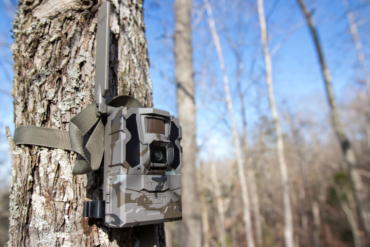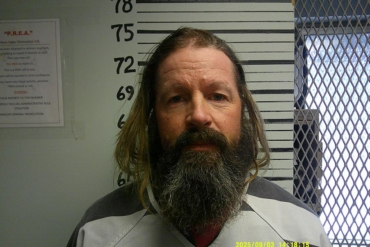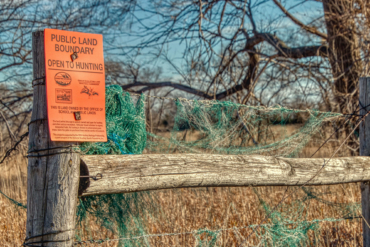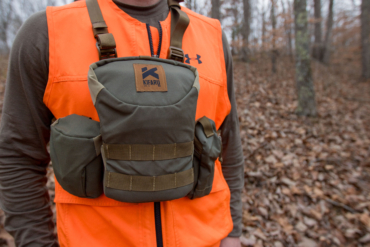Spring snow goose hunting might seem intimidating. But it’s not as difficult to get started as you might think.
The spring snow goose season challenges even the most experienced waterfowlers to endure dirty, rainy, and muddy fields in an effort to lure massive swirling flocks of sharp-eyed snows as they race from the southern parts of the U.S. toward the Arctic Circle.
This season is also widely known as the Light Goose Conservation Order, which the U.S. Fish and Wildlife Service issued as a special wildlife management action to reduce and stabilize populations during the spring snow goose migration. As such, the spring Conservation Order allows for a unique set of hunting regulations including no daily bag limits, extended shooting hours, and the use of electronic callers.
Although the snow goose season is an ideal opportunity to extend the waterfowl season, its fascination comes from witnessing thousands of barking geese rolling overhead. The popular scenes you see in various magazines and on social media are likely from experienced snow goose hunters with lots of capital invested in their spreads.
In short: I’m here to help get you started as a snow goose hunter and to highlight some fundamental skills and gear to increase your chances of success.
As your prowess as a snow goose hunter grows, you can build a bigger spread, add more electronic callers, and acquire higher-capacity shotguns. But for now, let’s get you started with the basics of snow goose hunting.
What to Wear Snow Goose Hunting
With all those eyes staring at your spread from above, it’s important to keep yourself hidden with some solid whites.
While it is undeniable that white is the optimal color choice for snow goose season, it is also important to ensure that your clothing is able to withstand the temperamental spring weather. The frosty early mornings can turn a field to mud throughout the day, and clear skies will inevitably bring rainstorms.
As such, layers are crucial, waterproof outer shells can be lifesavers, and gloves, hats, and a good pair of boots are worth their weight in gold. The most convenient option is to spring for the classic Tyvek suit or painters’ coveralls.
Another option is to pick up some white sweats that will stretch over your clothing system. In an effort to keep costs low, I like Rodgers Sporting Goods’ reasonably priced Snow Goose Suit, which provides suitable breathable and waterproof attributes.
If you want to go all-in, Sitka’s NoDak Snow Goose System incorporates white into its extremely high-tech offerings. The NoDak jacket ($299) and NoDak bibs ($299) are a great investment for the passionate snow goose hunter. But they’re likely overkill for beginners.
How to Set Up Your Decoy Spread

Aside from location, one of the most important elements in a snow goose hunt is your decoy spread. The hordes of snows that you are hoping to lure into your decoys have been hunted since the fall and are keenly aware of anything unfamiliar.
Realism is the key.
Your best bet is to throw the biggest spread possible while teaming up with a few of your friends to really extend the white mass that will draw them down from a thousand feet up. A big spread is helpful to convince the large flocks of juvenile birds. But, a smaller setup can convince the adults leading the migration or singles flying in the area.
When starting out, it can be tough to build a massive spread, so start with a few dozen or so decoys and try to pair up with some buddies to really multiply your decoy numbers.
Divebomb Industries’ S3HLs ($60 for 12) are a headless windsock option that comes in packs of 1 dozen, 5 dozen, and 10 dozen. The brand also makes the S31 decoys ($70 for 12), which you can see below.
In addition, dark geese, specks, and ducks are also traveling back north, so if you are really concerned with decoy numbers, add your other waterfowl decoys at the end of your spread.
While the reigning rule throughout snow goose season is that bigger is better, don’t let it be an obstacle. I have had success on snows with small spreads on some good sheet water and in a field.
The Ideal Spring Snow Goose Setup

An ideal baseline for the most popular snow goose spreads is 1,000-plus goose decoys, whether that be socks, silhouettes, or full bodies. Further, adding some motion decoys will help to imitate a lively feed, but also focus on the shape of your spread.
Snows feed in a frenzy, constantly in competition to beat the others out for the next mouthful. As such, you need to create a feeding line which will also serve as the main focus when the waves circle in.
Place the biggest mass of decoys at the top, forming a feeding line that faces into the wind, and then spread your decoys out as you taper the main shape.
You should set yourself downwind of the feedline but remain within the big mass where you can watch the tornado form above you and eventually see the snows crawl up the spread. While the size of your spread can range, be sure to keep yourself hidden in the tightest bunch of decoys. It is likely that the flock will stay focused on the feedline instead of you, your friends, and some rock-solid retrievers hiding in the spread.
Note: Be sure to identify all your snows before you shoot. Regardless of your experience level, a good rule is to never shoot into a mixed flock.
Snow Goose Calls
As the regulations state, snow goose hunters can use electronic calls during the season to pump realistic sounds at high volumes to mimic a frenzied snow goose feed. However, some of the better e-callers come with a price tag that may deter new snow goose hunters, like the FoxPro Snow Commando Digital E-Caller at $430.
For the beginner, I would opt for a mouth call like the DRC NODAK Snow Call ($150) or the Snow Trooper from Pacific Custom Calls ($120). Each of these calls can give its user some good depth and range to convince the small group or singles to commit to your spread. When you hit that bark, murmur, or other goosey-notes, the smaller groups should really center up and focus on the white mass of your snow goose setup.
If you’re looking for something more affordable, check out the Buck Gardner Snow Goose Hammer Call ($30) as a starting point.
While the bigger setups may require an e-caller to match the footprint of the spread, a smaller setup and a mouth call can be great for the solo or smaller group of hunters.
Remember, even the biggest spread with all the motion and noise will still likely be obsolete to a neighboring live feed of real snow geese.
Snow Goose Shotguns

Most snow goose hunters will use a 12-gauge semiautomatic shotgun, like the Benelli Super Black Eagle or the Browning A5 series. And serious goose hunters will even get white shotguns specifically made for the day’s hunt. These include options like the new-for-2022 Mossberg 940 Pro Snow Goose ($1,165) and the Stoeger M3500 Snow Goose ($899).
Choke-wise, set your gun up with improved cylinder and modified chokes. These allow you to shoot easily in close conditions.
Though 3.5-inch shells are the choice of many, 3-inch shells can save your shoulder a bit on recoil. You’ll be shooting a lot over a long period of time if you get into snows, and it can wear your shoulder down.
Another highlight of spring snow goose season is the limitless amount of snows you can drop in a day with high-capacity shotgun magazines. The allure of pumping dozens of shells at a choir of snows is an addiction that keeps many snow goose hunters grinding throughout the season.
While the prospect of bagging triple digits dangles out there every time you set down your spread, remember we’re just getting started. So, pull out your plug, add a shell extender, and enjoy the experience.
Final Thoughts
There is no doubt that the spring migration can be exhausting and difficult to figure out, but seeing the sheer piles of snows barking toward your spread can be a mesmerizing hunting experience.
While a huge rainout of goose numbers is optimal, the basics I have provided should help you achieve some measurable success.
Put simply, wearing whites in a good decoy spread with some calling and a reliable shotgun should be all you need to get started. But as I said, it is more than likely even the best snow goose hunters with premium spreads will get beat out by an actual feed in the area.
So, enjoy chasing one of nature’s premium migrations, and best of luck fooling some of the most high-flying and suspicious birds out there. It can be really special.






